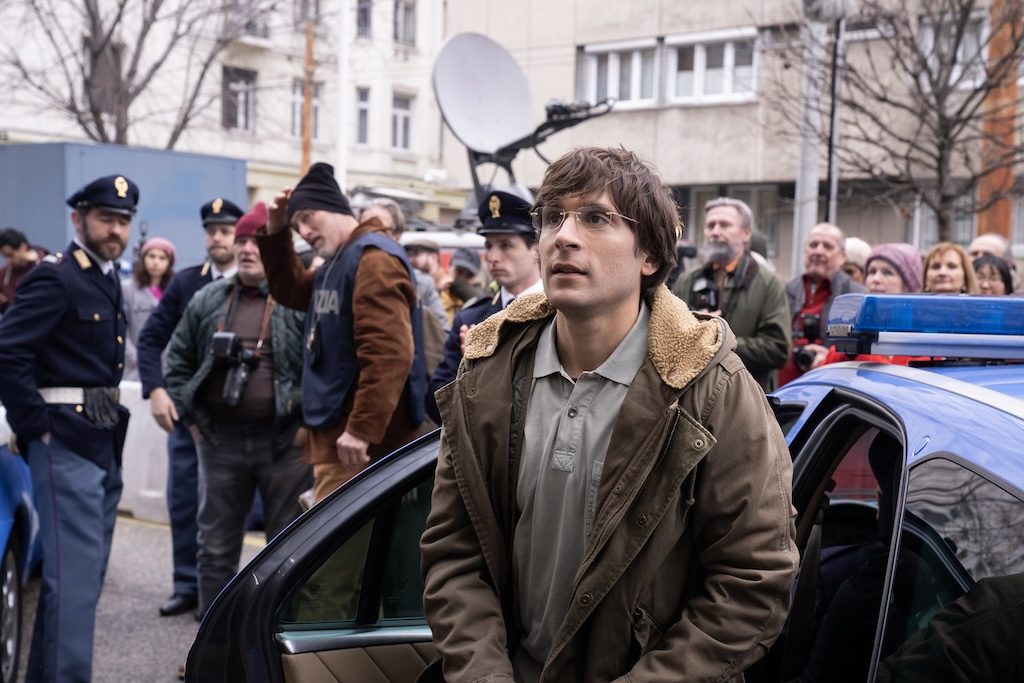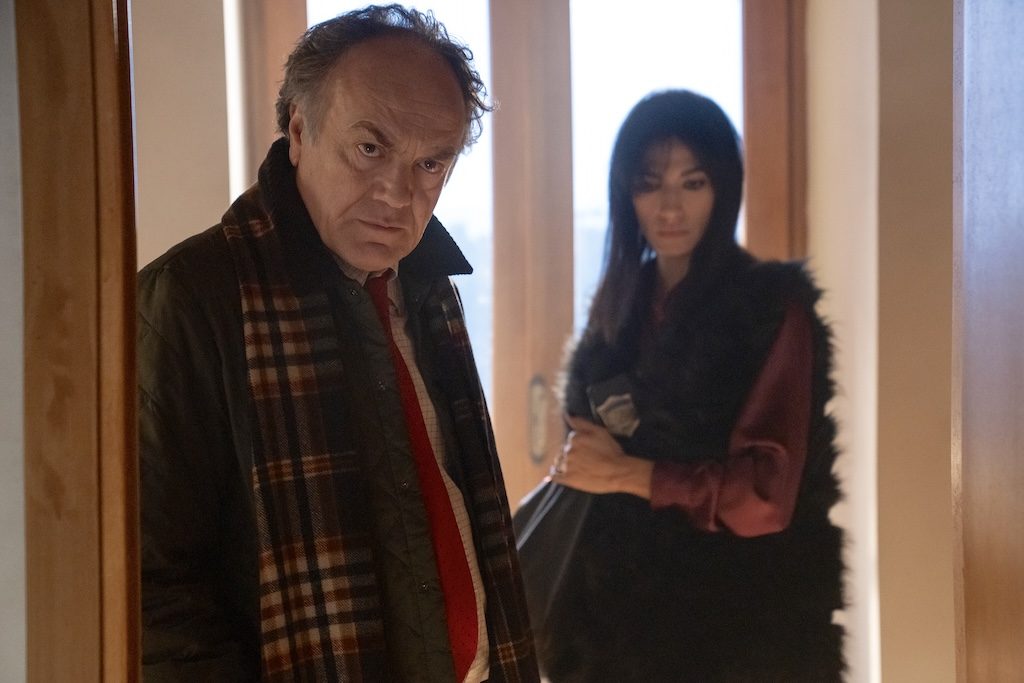KJ Steinberg Talks “The Twisted Tale of Amanda Knox”: The Anatomy Of Bias

Created by KJ Steinberg (This Is Us), The Twisted Tale of Amanda Knox is a Hulu limited series inspired by the true story of how Amanda Knox (portrayed by Grace Van Patten) was wrongfully convicted for the tragic murder of her roommate, Meredith Kercher (Rhianne Barreto) while in Italy, and her 16-year journey to set herself free and return to her regular life.
Steinberg spoke with Creative Screenwriting Magazine about shepherding this harrowing story to the screen.
What sets this particular story apart from other true crime stories?
I don’t think it’s a typical true crime story. It distinguishes itself in several ways. The driving theme focuses on the anatomy of bias — not just what happened to Amanda, but the ecosystem in which this great injustice occurred. This comprises multiple characters and cultures, each bringing their own biases and beliefs. We were focused on the humanity and the fallibility of our humaness that allowed for such a systemic catastrophe. The series isn’t solely about Amanda’s journey; it’s told from multiple perspectives, including Amanda’s, her prosecutor Giuliano Menini’s (Francesco Acquaroli) and Amanda’s boyfriend Raffaele Selecito’s (Giuseppe De Domenico).
The intention was to explore the story through different prisms so viewers could better understand the nuances of what really happened. This approach invites an emotional connection and challenges the audience to reflect on their own biases and perceptions of the case.

KJ Steinberg. Photo by Disney/ Michael Kirchoff
Another unique aspect is found in episodes seven and eight. A typical true crime series might end at a verdict, or an exoneration, but we felt it was crucial for Monica Lewinsky, myself, and my other producers to follow Amanda home after her release, illustrating her challenging re-entry into a life she thought she could reclaim, but found it to be very difficult.
It’s a constant reminder of the lasting impact of such traumatic experiences. The aftermath is a significant topic; it affects not only her family but Raffaele Selecito’s family and everyone involved.
By highlighting the concentric circles of damage — a ripple effect that spreads outwards — we aim to portray the full weight of what happened. The repercussions of this case extend far beyond the courtroom and the media frenzy; it fundamentally altered the lives of all those involved and reshaped their perceptions of justice and truth.
Additionally, we employed an Amélie-like device — a lens to view the story through Amanda’s magical realism perspective. This narrative technique adds a unique flavor to the storytelling. It emphasizes Amanda’s worldview, which is both imaginative and nuanced. It’s not just a whodunit; it’s a howdunit and a whydunit.
You were fortunate to have the real Amanda Knox involved. Can you talk about her role in guiding the story?
She was an unbelievable resource and partner. Amanda is exceptionally creative — she’s a gifted orator who approaches life with deep compassion and curiosity. Her influence on the project was tremendous. I would say if there was one driving influence, it would be that her sense of curiosity and compassion guided me in how I approached her character.
Her journey to reach out to her nemesis Giuliano Menini to bridge the divide between them is incredibly inspiring and shaped the character work throughout the series. The interactions between them reflect the salacious nature of human relationships, especially in the context of such an event.
Amanda shared personal stories and was extraordinarily flexible throughout the process. We did not want to create a hagiography or a propaganda piece about her purity; that perspective did not interest me. She allowed her character to be flawed and dimensional. Grace Van Patten, the actress who portrayed Amanda, presented her with such authenticity that we could explore her quirks, behaviors, and reactions to the trauma she experienced as a 20-year-old navigating an unfathomable crisis.
Amanda’s willingness to delve into those aspects while being the executive producer was unexpected and refreshing. This level of transparency added a rich texture to the portrayal. It’s not often you see a subject take such an active role in representing their story, offering insights that can help the audience connect to the character on a human level.

Raffaele Sollecito (Giuseppe de Domenico) Photo by Disney/ Adrienn Szabó)
Discuss the tone of the pilot episode where Amanda is still in America and her trip to Italy is a fun adventure.
The tone reflects her initial sense of adventure and optimism. It was very representative of Amanda’s naivete, her youth, her romanticism, and her excitement to have an adventure abroad.
The viewers experience the excitement she felt when leaving for Italy, and this creates a stark juxtaposition against the darker reality that follows. It’s essential to portray that contrast to highlight the complexity of her character and her journey.
By starting off with moments of joy, it enhances the emotional impact of the unfolding tragedy. The shift from an optimistic viewpoint to the harrowing experiences they face is central to understanding Amanda’s character and the biases that emerged in the media and legal system.

Giuliano Mignini (Francesco Acquaroli) & Valentina Greco (Roberta Mattei) Photo by Disney/ Adrienn Szabó
How do you feel the media played a role in shaping the public’s perception of Amanda?
The media landscape around this case was chaotic and often irresponsible. The sensationalism amplified biases and misrepresented the truth, framing Amanda in a particular light that influenced public opinion and judicial outcomes. The series seeks to explore the interplay between media narratives and real-life consequences.
The cultural context also plays a significant role. The clash of American and Italian cultures, as well as the perceptions of young women, adds layers of complexity. Amanda’s portrayal in the media was often reduced to stereotypes that ignored her humanity. By showing the many facets of her character and the biases at play, we can foster a deeper understanding of how narratives can be manipulated.
People seem to want Amanda to pay for the rest of her life, to live either in hiding, or live in some sober and macabre stance and not really talk about what her life was before she was caught in the crosshairs of this tragedy.
Can you expand on the media circus that prevailed?
It was almost gossip. If it seems plausible, just throw it in there and report it. It felt to me like the death of true journalism. There seemed to be no moral code there, there was very little corroboration going on, and there was unbelievable pressure to report and spit out a story.
This small, charming town suddenly was faced with all of this attention. There was so much interest in the story. There was so much competition for tidbits. There was the contagion of immorality that swept the media at the time. There was so much false narrative, so much slander. And there were leaks. So it was a really diseased system.
In telling Amanda’s story, how did you navigate the emotional weight of such a narrative?
Navigating the emotional weight is essential in a story like this. My approach was to ground the series in authenticity, which means allowing the audience to experience the emotional landscape without sensationalizing the tragedy.
We aimed to depict not just the harrowing events, but the complexities of human relationships and the individual choices that led to profound consequences.
Amanda has often and widely been criticized for being tone deaf to the way that people expected her to comport herself in the face of incredible trauma. And in trying to get inside the character of Amanda, to get inside her worldview, providing the audience with an experience that they could find themselves feeling perhaps somewhat discordant with the way that they thought I should be presenting this story
It’s about pacing, too. We wanted to provide space for relief amidst the tension. Moments of levity, character interactions, and dialogues are crucial in breaking that intense emotional flow, allowing the audience to digest the tragedy while still being emotionally engaged with the characters.
Amanda’s journey reflects resilience and the complexities of finding her way in a world that often misjudged her. Her experiences resonate on multiple levels, drawing the audience into her struggle for vindication and healing.
Amanda was released after four years in prison after her case was dismissed from court. Discuss her headspace.
She had an expectation that she would go back home and be able to resume her life. And what she found was just a hall of funhouse mirrors, the way that the world was receiving her, the narrative that had been spun about her, that had been fed by big media to the consumer who just imbibed it and amplified it was monstrous.
It was a monster that she needed to contend with. And the damage that had been done to her family was finally something that she was living after her release from prison.
But when she got home, she was faced with the wreckage. The wreckage that had visited her family and continues to today. As Monica [Lewisnky] always reminds me, the echoes of trauma are loud and long.
What do you hope viewers take away from The Twisted Tale of Amanda Knox?
I hope they walk away with a deeper understanding of the complexities of justice, bias, and the multifaceted nature of human experience. Our goal was to challenge viewers to reflect on their own perceptions and the biases that may influence how they interpret narratives.
Moreover, I want them to recognize the long-term impact of societal judgment and media representation on individuals’ lives. There’s a powerful message about empathy, compassion, and the importance of understanding diverse perspectives.
Join the Discussion!
Related Articles
Browse our Videos for Sale
[woocommerce_products_carousel_all_in_one template="compact.css" all_items="88" show_only="id" products="" ordering="random" categories="115" tags="" show_title="false" show_description="false" allow_shortcodes="false" show_price="false" show_category="false" show_tags="false" show_add_to_cart_button="false" show_more_button="false" show_more_items_button="false" show_featured_image="true" image_source="thumbnail" image_height="100" image_width="100" items_to_show_mobiles="3" items_to_show_tablets="6" items_to_show="6" slide_by="1" margin="0" loop="true" stop_on_hover="true" auto_play="true" auto_play_timeout="1200" auto_play_speed="1600" nav="false" nav_speed="800" dots="false" dots_speed="800" lazy_load="false" mouse_drag="true" mouse_wheel="true" touch_drag="true" easing="linear" auto_height="true"]










You must be logged in to post a comment Login